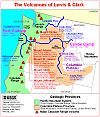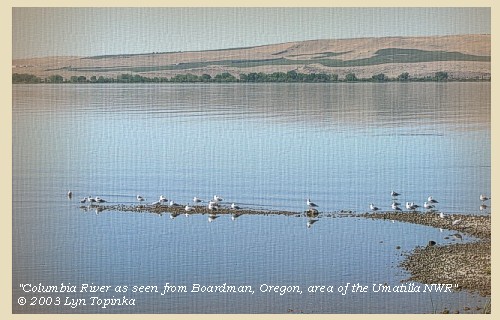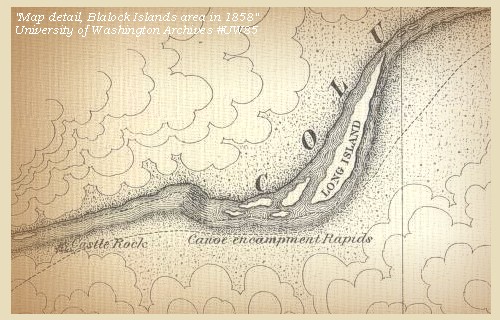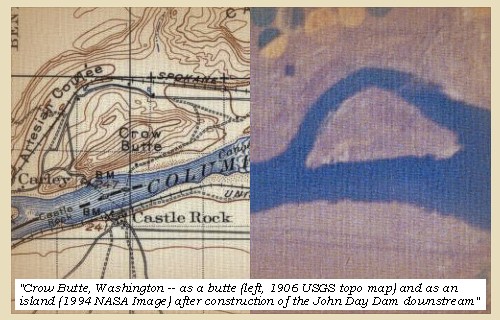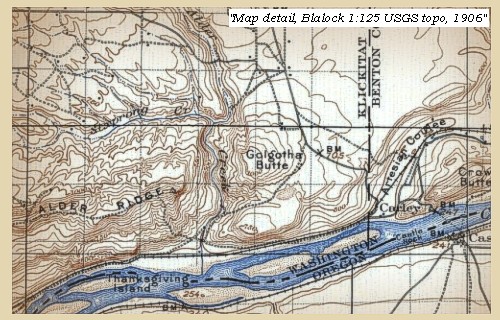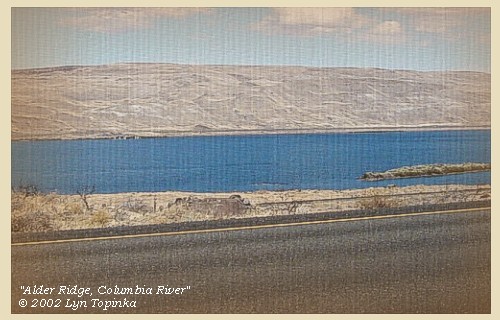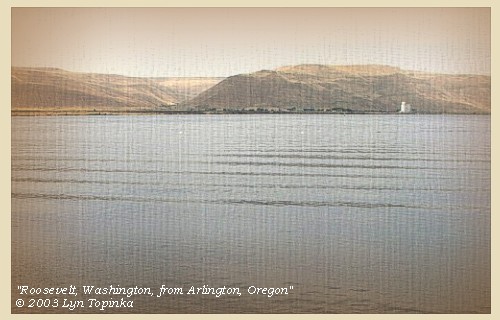The Volcanoes of
Lewis and Clark
Lewis and Clark
|
October 20, 1805 Islands and Ridges - Umatilla to Roosevelt and Arlington |
|
Home
The Volcanoes of Lewis and Clark Map of the Journey Volcanoes, Basalt Plateaus, Major Rivers, etc. The Volcanoes Mount Adams, Mount Hood, Mount Jefferson, Mount Rainier, and Mount St. Helens CALENDAR of the Journey October 1805 to June 1806 Along the Journey Pacific Northwest Maps - Columbia River, Volcanoes, Flood Basalts, Missoula Floods, Geology, etc. The Corps of Discovery The Journey of Lewis and Clark About the Reference Materials The Journals, Biddle/Allen, DeVoto, Gass, Moulton, Topo Maps, and others USGS Lewis and Clark Links Links to USGS Websites highlighting the Lewis and Clark Journey Resources Publications Referenced and Websites Visited |
PREVIOUS
October 19 Down the "Great Columbia", Spring Gulch to Umatilla NWR |
October 20
Islands and Ridges Umatilla NWR to Roosevelt and Arlington Umatilla NWR, Blalock Islands, Crow Butte and Crow Butte State Park, Alder Creek and Willow Creek, Alder Ridge, Arlington (Oregon) and Roosevelt (Washington) |
CONTINUE
October 21 Rapids and Rivers, Roosevelt and Arlington to the John Day |
|
To the Pacific - October 1805
Islands and Ridges - Umatilla to Roosevelt and Arlington |
| Lewis and Clark's camp of October 19, 1805, was near Irrigon, Oregon, an area which is today part of the Umatilla National Wildlife Refuge. |
| Sunday, October 20, 1805 |
| The morning was cool, the wind from the southwest. ...... |
| "... a clear frosty morning. we Set out eairly. proceeded on passed a pleasant part of the County level Smooth plains but no timber. the River Smooth ..." [Ordway, October 20, 1805] |
| Between Irrigon and Boardman, today much of the banks on both sides of the Columbia along this reach are a part of the Umatilla National Wildlife Refuge. |
| We passed three vacant houses near our camp, and at six miles reached the head of a rapid on descending which we soon came to another, very difficult and dangerous. It is formed by a chain of large black rocks, stretching from the right side of the river, and with several small islands on the left, nearly choaking the channel of the river. To this place we gave the name of the Pelican rapid [???], from seeing a number of pelicans and black cormorants about it. Just below it is a small island near the right shore, where are four houses of Indians, all busy in drying fish. [downstream of Patterson, Washington] |
| "... a chane of rocks makeing from the Stard. Side and nearly Chokeing the river up entirely with huge black rocks, ..." [Clark, October 20, 1805] |
| At sixteen miles from our camp we reached a bend to the left opposite to a large island, and at one o'clock halted for dinner on the lower point of an island on the right side of the channel. Close to this was a larger island on the same side, and on the left bank of the river a small one, a little below. [Blalock Islands area] We landed near some Indian huts, and counted on this cluster of three islands, seventeen of their houses filled with inhabitants, resembling in every respect those higher up the river; like the inhabitants, they were busy in preparing fish. ...... |
| Half a mile beyond this, and at the distance of twenty-four from our camp, we came to the commencement of the highlands on the right [Canoe Ridge and Crow Butte area], which are the first we have seen on that side since near the Muscleshell rapids [Umatilla Rapids], leaving a valley forty miles in extent. |
| Having dined we proceeded past a small island, where were four huts of Indians, and at the lower extremity a bad rapid. Eight miles lower we passed a large island in the middle of the riverm below which are eleven small islands, five on the right, the same number on the left and one in the middle of the stream. A brook falls in on the right side [Alder Creek, Washingon], and a small rivulet empties itself behind one of the islands [Willow Creek, Oregon]. |
| "... at 8 miles lower passed a large Island near the middle of the river a brook on the Stard. Side and 11 Islds. all in view of each other below, a riverlit falls in on the Lard. Side behind a Small Island a Small rapid below. ..." [Clark, October 20, 1805] |
| The country on the right consists of high and rugged hills; [Alder Ridge], the left is a low plain with no timber on either side, except a few small willow-brushes along the banks; though a few miles after leaving these islands the country on the left rises to the same height with that opposite to it, and becomes an undulating plain. |
| Two miles after passing a small rapid we reached a point of highland in a bend towards the right, and encamped for the evening [near today's Roosevelt, Washington, across from Arlington, Oregon], after a journey of forty-two miles. The river has been about a quarter of a mile in width, with a current much more uniform than it was during the last two days. We killed two speckled gulls, and several ducks of a delicious flavour. |
| "... this evening the Countrey on the Lard. Side rises to the hight of that on the Starboard Side, and is wavering ..." [Clark, October 20, 1805] |
|
|
|
The Camp - October 20, 1805:
Lewis and Clark's camp of October 20, 1805 was on the Washington side of the Columbia River, near today's town of Roosevelt, across from today's town of Arlington, Oregon. |
| Home | Previous | Continue |
If you have questions or comments please contact: GS-CVO-WEB@usgs.gov
June/July 2004, Lyn Topinka
The Volcanoes of Lewis and Clark Home Page | CVO Home Page

